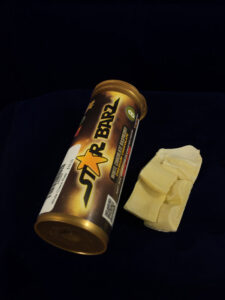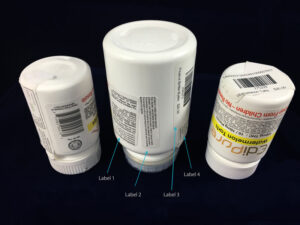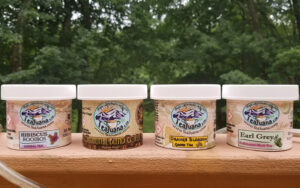by Bill Ludlow, president and CEO, CRATIV Packaging

Packaging in the cannabis industry has evolved tremendously in just the past five years since Colorado began driving child-resistant (CR) packaging requirements circa 2014. Typically, as a state or nation comes online with cannabis regulations, CR packaging becomes written into law. Usually, cannabis regulations reference the federal law that defines the certification required to be deemed as child-resistant, 16 CFR 1700.20. Today is the most innovative time in history for the development of new CR packaging to meet the needs of the cannabis market. No longer do edibles, vape products or pre-roll joints have to be packaged in bottles that were designed for pills.
Packaging requirements
The CR requirement is the first design input that must be met. Other design inputs to consider are size and shape to cover a wide range of cannabis products. Large “footprint” for regulatory labeling requirements and branding also is key. Innovation in CR packaging for cannabis has included the use of materials, such as rigid plastics, flexible films, tin and tear-resistant papers. Since there is variable information for the regulatory requirements, a pressure-sensitive label is typically used with final lot/license information.

Cannabis companies must be careful about purchasing too much packaging inventory. Preprinted products can lead to obsolete inventory if regulations change and different regulatory labeling requirements come into play. It is common to see cannabis products at dispensaries where great initial branding has been ruined by additional stickers that had to be applied to meet updated regulations.
Branding typically is carried out with pressure-sensitive labels or preprinted information directly on the packaging. Some rigid plastic packaging has begun to be preprinted; however, this has not become dominant in the cannabis industry yet. So, there is a great deal of potential in this area.
In many cases, dispensaries also are required to put a label on the product that shows their license number and date of sale. The industry is doing its best to make sure product components and manufacturing are traceable; however, use of a single lot number on a product that can be traced back through a quality system to carry out an investigation is not being done in most cases. Often, cannabis companies lack quality systems to carry out incoming inspection of packaging.
Since cannabis is federally legal in Canada and being controlled by Health Canada (the equivalent of the FDA in the US), quality standards are developing at an accelerated rate there. However, branding in Canada is essentially not allowed by law. The packaging is only allowed to have one small brand image. So, the product ends up looking pretty bland, like the back end of a pharmacy.
Decorating for cannabis packaging

If cannabis businesses are considering direct-to-package printing for rigid plastics specifically, digital inkjet may be the best choice to consider. Direct printing provides the flexibility to make changes to the information on the fly without having the costs of additional tooling. Furthermore, there can be cost savings involved with printing directly on the packaging vs. labeling. The more permanent, textured look of digital printing can present a higher quality product.
Moreover, dispensaries have limited shelf space. In many cases it is the budtender who is recommending the products from behind the counter. Being able to showcase the product and make it stand out on the shelves is key.
For information or graphic images that will not continuously change, other decorating options can be used, including pad printing and screen printing. Even hot foil stamping can be considered for metallic effects that can help attract customers as they contemplate different cannabis products when visiting dispensaries. In-mold labeling (IML) is beginning to make its way onto the cannabis scene. The options for films for pressure-sensitive labels also are vast, including digital printing on foils and embossing. Hydro decorating also is an option. There are certainly cannabis companies that want to “bling out” their product and will pay for it.
The key to implementing advanced plastics decorating is to find a customer that is willing to invest in the automation technology or has the volume to support it. Don’t depend on, “if you build it they will come” just yet. Demand/volume is still very unpredictable. The industry is just beginning to understand that advanced manufacturing efficiencies are needed to drive down cost of goods sold (COGS) and remain competitive. Packaging automation is going to become more prominent in the coming years, and as the industry stabilizes more opportunities for automated decorating systems for direct-to-package printing will emerge.
Cannabis packaging and sustainability
The cannabis industry is very LOUD about sustainability. Often the flexible packaging (bags) prominent in the industry today are not recyclable. Many of the paper CR products use a multilayer (nonrecyclable) film to meet the tear resistance requirement for passing the child-resistant certification. Lots of the tin CR designs also have assembled plastic components that deem them nonrecyclable. As a result, additives to polypropylene to promote faster degradation in landfills are becoming more common. Hemp and plant-based resins also are becoming more popular. But the verdict is still out on whether cannabis customers are going to be willing to pay the higher cost for these sustainable options.
The industry’s voice on sustainability will drive urgency for other CPG categories. The sustainability concerns within the cannabis industry also will help jump-start additional direct-to-package printing options. There are certainly sustainable advantages of printing directly on recyclable plastic packaging vs. applying a preprinted label. However, there’s no easy answer. The engineering requirements to enable a package designed to meet the CR testing is difficult without advanced engineered materials. Advanced materials are not always sustainable.
In summary:
- New industry spurs innovation – The cannabis industry has created a fascinating new opportunity for the development of packaging designs.
- Demand is squishy – Cannabis companies can’t give a good forecast because they don’t have any demand history. They do sometimes have solid launch plans for their product but – as with any other new product – it doesn’t always work out.
- Branding is key – In the US and other countries where branding is allowed, differentiating products on dispensary shelves is a must. There is no dominant established brand today. Who will be the Nestlé of cannabis-infused chocolate? Expect one – and other brands for pre-roll joints, gummies, concentrates and vape pens – to emerge.
- Small lot, fast changeover printing is winning – With regulation changes, such as new warning statements that must be added, it is important for cannabis companies to stay “nimble.” Obsolete inventory creates lots of frustration and cuts into the bottom line. Quick set-up and changeover options – including digitally printed labels and direct digital printing – are the most practical at this stage in the evolution of cannabis packaging.
- High volume options – Once a cannabis company has volumes that reach a certain point and stability comes into place with regulations, other advanced technologies – such as IML, hydro decoration, hot stamping and thermal transfer printing – will begin to more rapidly take CPG market share in cannabis.
 Bill Ludlow is a licensed professional mechanical engineer who founded CRATIV Packaging and pivoted his career to focus on the cannabis industry in early 2015. CRATIV’s mission is to support the cannabis industry by providing unique consumer-friendly packaging solutions designed to keep cannabis out of the wrong hands while allowing businesses to express themselves through fully customizable and brandable containers. For more information, visit www.crativpackaging.com.
Bill Ludlow is a licensed professional mechanical engineer who founded CRATIV Packaging and pivoted his career to focus on the cannabis industry in early 2015. CRATIV’s mission is to support the cannabis industry by providing unique consumer-friendly packaging solutions designed to keep cannabis out of the wrong hands while allowing businesses to express themselves through fully customizable and brandable containers. For more information, visit www.crativpackaging.com.


